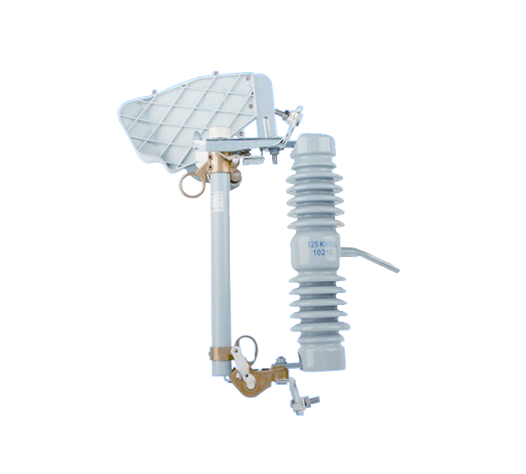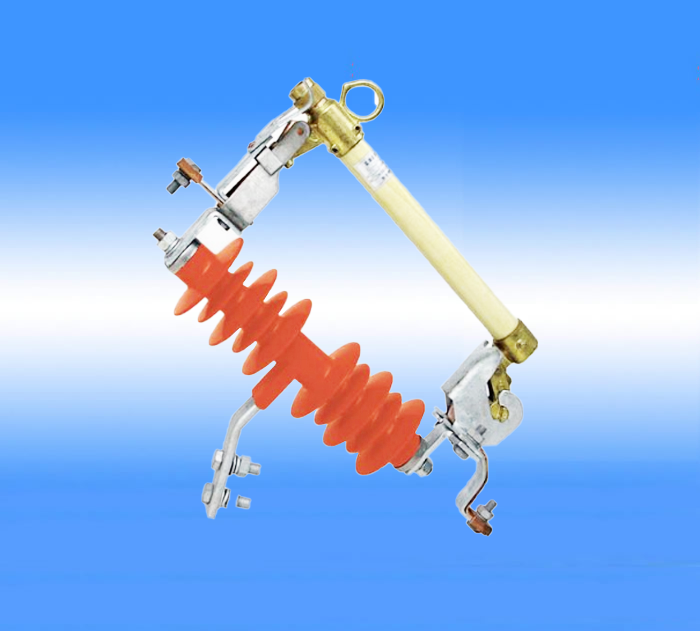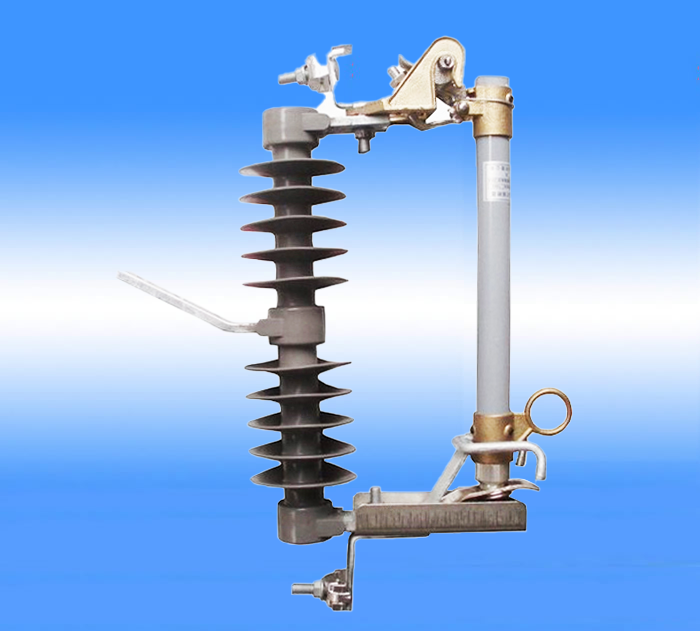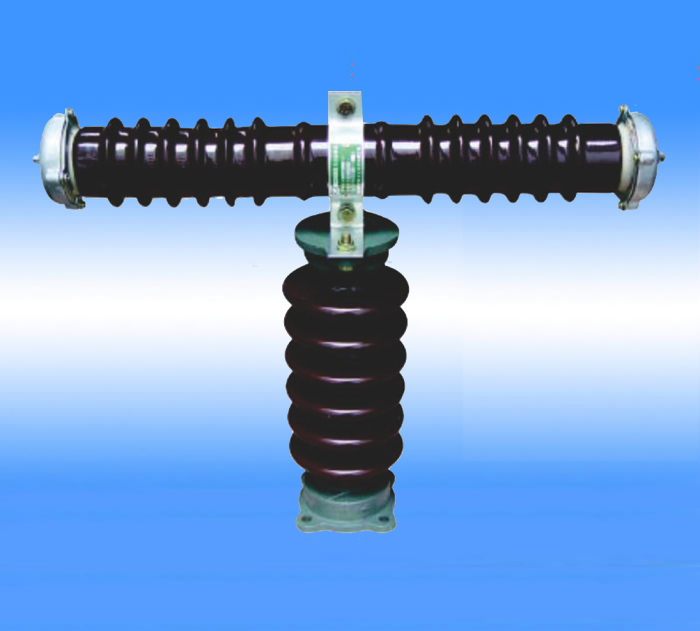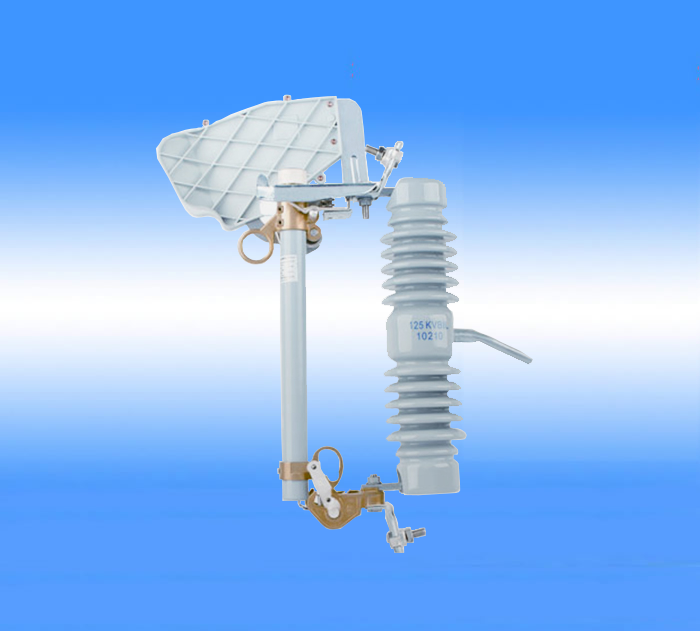
RW12-15 ejection drop fuse
Brand: lixiong
- Description
- Installation
The drop-out fuse is the most commonly used short-circuit protection switch for distribution line branches and distribution transformers. It is economical, easy to operate, and highly adaptable to outdoor environments. It is widely used in distribution lines and the primary side of distribution transformers for protection and equipment switching and cutting operations.
10kV10kV Installation Precautions
During installation, the fuse should be tightened so that the fuse is subjected to a tensile force of about 100%, otherwise it is easy to cause the contacts to heat up.
The fuse should be installed firmly and reliably on the cross-arm frame without any shaking or swaying.
The fuse tube should have a downward inclination of °±° so that the fuse tube can fall quickly by its own weight when the fuse melts.
The fuse should be installed on a cross-arm frame with a vertical distance of not less than 100 from the ground. If it is installed above the distribution transformer, it should maintain a horizontal distance of more than 100 from the outermost contour boundary of the distribution transformer to prevent other accidents caused by the fuse tube falling.
The length of the fuse tube should be adjusted appropriately, and the duckbill tongue should be able to hold more than two-thirds of the contact length after closing the switch to avoid the false operation of falling off by itself during operation. The fuse tube should not be blocked by the duckbill to prevent the fuse tube from falling off in time after the fuse is melted.
The fuse used must be a standard product of a regular manufacturer and have a certain mechanical strength. Generally, the fuse is required to withstand at least the above tensile force.
The drop-out fuse is installed outdoors, and the phase distance is required to be greater than.
Under normal circumstances, it is not allowed to operate the drop-out fuse with load, and it is only allowed to operate the unloaded equipment line. However, in the branch line of the rural power distribution line and the distribution transformer with a rated capacity less than , it is allowed to operate with load according to the following requirements:
During the operation, two people are responsible for one person to monitor and one person to operate, but they must wear insulating gloves that have passed the test, wear insulating boots, wear goggles, and use qualified insulating rods that match the voltage level for operation. Operation is prohibited in thunderstorms or heavy rain.
When operating the switch, it is generally stipulated that the middle phase is disconnected first, then the leeward phase, and finally the windward phase. This is because the distribution transformer is changed from three-phase operation to two-phase operation, and the arc spark generated when the middle phase is disconnected is the smallest, which will not cause a phase-to-phase short circuit. The second is to disconnect the leeward phase, because the middle phase has been disconnected, and the distance between the leeward phase and the windward phase has doubled. Even if there is an overvoltage, the possibility of causing a phase-to-phase short circuit is very small. When the windward phase is disconnected at last, there is only a capacitive current to the ground, and the sparks generated are very slight.
When closing the switch, the operation sequence is opposite to that of closing the switch, first closing the windward phase, then closing the leeward phase, and finally closing the middle phase.
Operating the melting tube is a frequent project. If you don't pay attention, it will cause contact burns and poor contact, overheat the contacts, anneal the springs, and make the contact contact worse, forming a vicious cycle. Therefore, when pulling and closing the fuse, you should use moderate force. After closing, carefully check whether the duckbill tongue can tightly hold more than two-thirds of the tongue length. You can use the pull rod to hook the upper duckbill and press it down a few times, then gently try to pull it to check whether it is closed. If the switch is not closed in place or not closed securely, the static contact pressure on the fuse is insufficient, which can easily cause contact burns or the fuse tube to fall off.
10kV10kV Installation Precautions
During installation, the fuse should be tightened so that the fuse is subjected to a tensile force of about 100%, otherwise it is easy to cause the contacts to heat up.
The fuse should be installed firmly and reliably on the cross-arm frame without any shaking or swaying.
The fuse tube should have a downward inclination of °±° so that the fuse tube can fall quickly by its own weight when the fuse melts.
The fuse should be installed on a cross-arm frame with a vertical distance of not less than 100 from the ground. If it is installed above the distribution transformer, it should maintain a horizontal distance of more than 100 from the outermost contour boundary of the distribution transformer to prevent other accidents caused by the fuse tube falling.
The length of the fuse tube should be adjusted appropriately, and the duckbill tongue should be able to hold more than two-thirds of the contact length after closing the switch to avoid the false operation of falling off by itself during operation. The fuse tube should not be blocked by the duckbill to prevent the fuse tube from falling off in time after the fuse is melted.
The fuse used must be a standard product of a regular manufacturer and have a certain mechanical strength. Generally, the fuse is required to withstand at least the above tensile force.
The drop-out fuse is installed outdoors, and the phase distance is required to be greater than.
Under normal circumstances, it is not allowed to operate the drop-out fuse with load, and it is only allowed to operate the unloaded equipment line. However, in the branch line of the rural power distribution line and the distribution transformer with a rated capacity less than , it is allowed to operate with load according to the following requirements:
During the operation, two people are responsible for one person to monitor and one person to operate, but they must wear insulating gloves that have passed the test, wear insulating boots, wear goggles, and use qualified insulating rods that match the voltage level for operation. Operation is prohibited in thunderstorms or heavy rain.
When operating the switch, it is generally stipulated that the middle phase is disconnected first, then the leeward phase, and finally the windward phase. This is because the distribution transformer is changed from three-phase operation to two-phase operation, and the arc spark generated when the middle phase is disconnected is the smallest, which will not cause a phase-to-phase short circuit. The second is to disconnect the leeward phase, because the middle phase has been disconnected, and the distance between the leeward phase and the windward phase has doubled. Even if there is an overvoltage, the possibility of causing a phase-to-phase short circuit is very small. When the windward phase is disconnected at last, there is only a capacitive current to the ground, and the sparks generated are very slight.
When closing the switch, the operation sequence is opposite to that of closing the switch, first closing the windward phase, then closing the leeward phase, and finally closing the middle phase.
Operating the melting tube is a frequent project. If you don't pay attention, it will cause contact burns and poor contact, overheat the contacts, anneal the springs, and make the contact contact worse, forming a vicious cycle. Therefore, when pulling and closing the fuse, you should use moderate force. After closing, carefully check whether the duckbill tongue can tightly hold more than two-thirds of the tongue length. You can use the pull rod to hook the upper duckbill and press it down a few times, then gently try to pull it to check whether it is closed. If the switch is not closed in place or not closed securely, the static contact pressure on the fuse is insufficient, which can easily cause contact burns or the fuse tube to fall off.
Request a Quote
We will deliver a solution and quote that best suits your business needs


